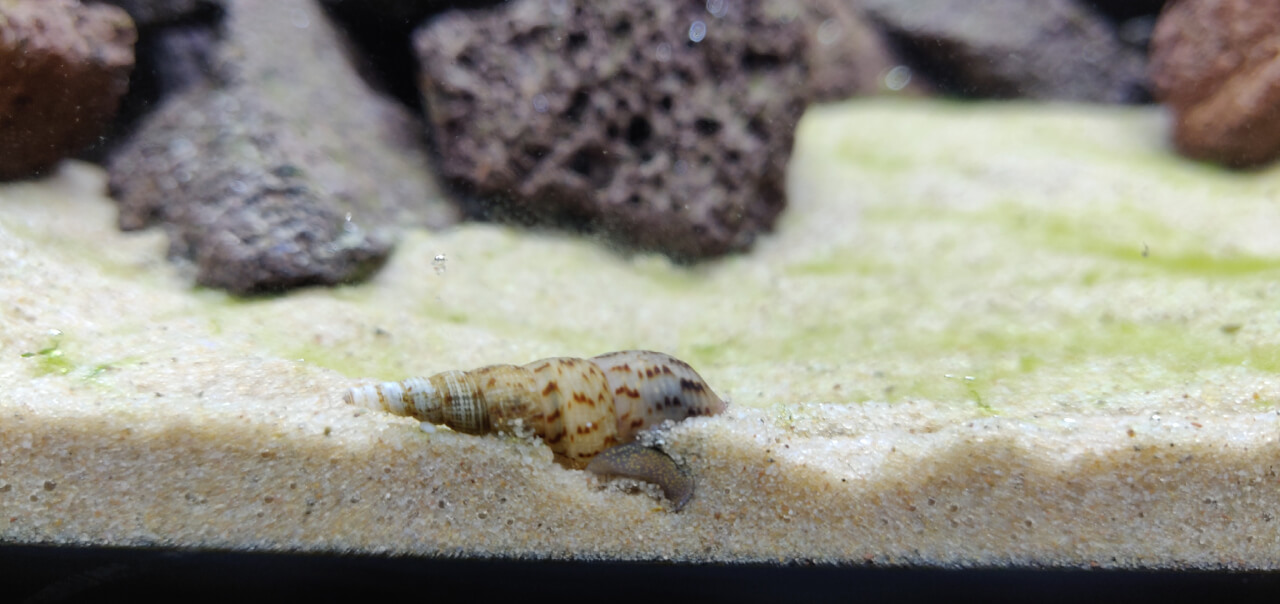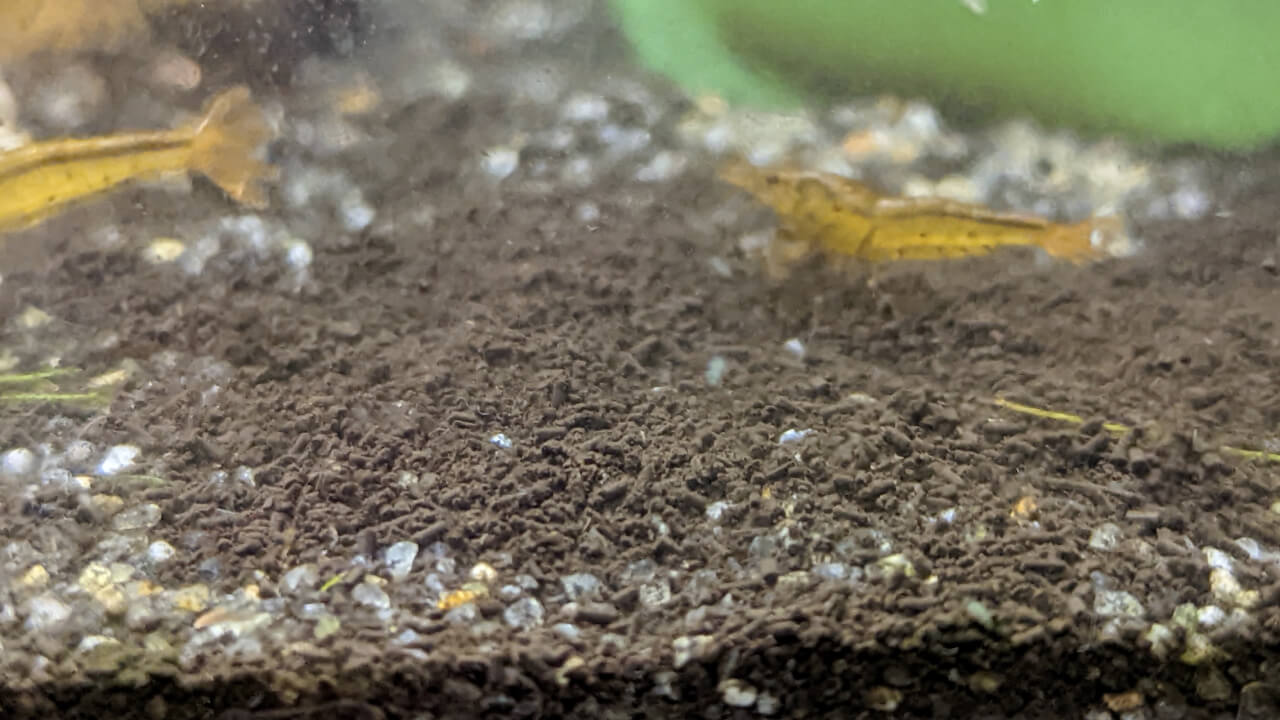Vacuuming your shrimp tank gravel is usually optional, and only becomes a requirement if you start noticing some problems.
This article will help you to learn how to tell if you should gravel vac, and some other points you should consider for different types of substrate.
It’s normally recommended to avoid disturbing buffering substrates, as it can cause them to expire faster, make a cloudy mess, or even affect the water chemistry temporarily. If you still want to vacuum them, do so with care.
How to gravel vac
Vacuuming the gravel is as simple as waving a hose or tube over the top of your tank’s substrate. The detritus and waste materials sitting on top of your substrate will generally be very lightweight and float around the water with any movement nearby.
You can create a vacuum in a few different ways:
- Connect some airline tubing to a small syringe
- Use your water change tool, e.g. a Python water changer
- Use a turkey baster
Using the vacuum tool of your choice, place the sucking end over the collections of brown detritus and keep it in a jug for now. This waste material and water is great for watering any houseplants later, giving them an extra boost of nutrients.
You can vacuum up as much dirt as you like, but if you’re trying to reduce nitrate build-up you should try to remove as much as you can.
Be careful near any plants buried in the substrate, you don’t want to accidentally make your plants float away.
Once you’ve finished sucking up water and dirt, let the dirt in the jug settle for a while. Double check that you haven’t accidentally caught any shrimp before you pour the water away. Baby shrimp in particular can be very hard to spot at first, as they’re much smaller and mostly transparent.
Vacuuming with baby shrimp
Vacuuming a tank with new baby shrimp in can seem a bit scary, and you should be careful.
There are a few tips you can use to help keep it safe and easy:
- Cover the end of your vacuum tube with pantyhose or tights
- Hold a fine net over the end of the tube
- Shoo nearby shrimp away by waving the tube around first
Waving the vacuum end near any curious shrimp should be enough to scare them out of the way. Keep an eye on the tubing and bucket to watch for any movement, though, to make sure you have not caught any.
Why vacuum the gravel?
Vacuuming dirt from the bottom of your aquarium isn’t a job that you have to do, but there are a few reasons you might want to.
- The tank looks dirty: light coloured substrate can start to look a bit unpleasant when detritus builds up
- The nitrates are high: removing the excess waste will stop it breaking down and releasing nitrates
- Keep the filter sponge clean: removing the dirt prevents it clogging up the pores in your filter sponge
- Prevent anaerobic gas pockets: reduce the risk of dangerous gas build up under the substrate
- Planaria hide in the substrate: keeping it clean makes them easy to spot if you have any
Looking dirty
In a tank without any burrowing snails, like a Malaysian Trumpet, the shrimp waste will build up on the substrate. With light substrates like sand, this can make the tank look dirty fairly quickly.

Nitrates
Over time, the leftover waste will break down into the water, and this can cause your nitrate level to increase.
Whilst nitrates can be beneficial for a planted tank, you need to make sure you keep it to a safe level for your shrimp. Try to keep the nitrates below 20 ppm, but preferably at close to zero.
Clean sponge filter
You should be cleaning your filter sponge every so often anyway, but removing the surface detritus helps the sponge last longer between cleans.
Gas pockets
Anaerobic gas pockets can build up in substrates made up of small particles, like sand. Where the particles are so tightly packed together, it can prevent air getting in or out of the deeper areas.
These gas pockets can eventually lead to large amounts of trapped gases created by anaerobic bacteria. If left alone, this could cause health issues for your shrimp when they get back into the water.
Planaria
Planaria are a pest worm with a diamond-shaped head that thrive in an overfed tank. Keeping your substrate clean will help to reduce overfeeding caused by any uneaten leftovers. You can also use a glass dish to feed your shrimp to prevent the food making a mess of the substrate in the first place.
Another benefit of a clean substrate is you’ll be able to more easily tell if you do have any Planaria. They normally spend most of their time hiding in the substrate, venturing out occasionally in search of food.
How often should you vacuum?
There isn’t a rule to determine how often you should gravel vac, it’s different for every tank.
Generally, if you’d like to clean your substrate, it’s a good idea to make it part of your water change schedule.
You should keep an eye on your water quality, specifically the ammonia, nitrite, and nitrate levels. If you have a large amount of detritus and see any of these parameters climb up, you should probably vacuum some out.
As you get used to maintaining each tank, you’ll get a better idea of how often you should vacuum the substrate.
Heavily planted tanks, for example, might appreciate the leftover waste for extra nutrients.
I’d suggest doing any vacuuming before you clean your filter sponge, though. Otherwise, you’ll end up with lots of the lightweight dirt floating around the tank and quickly clog up the sponge again.

